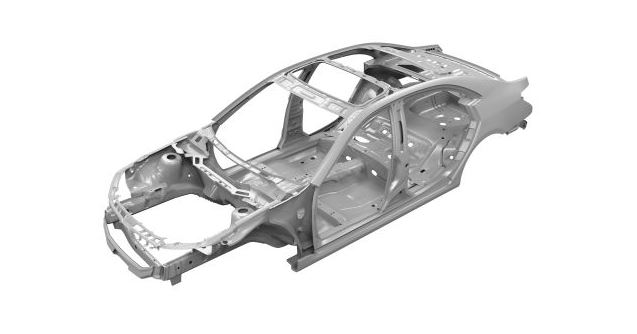Q: Which is better between a body-on-frame and unibody chassis design?
…
A: Most vehicles are built using either “body-on-frame” or “unibody” design. The terms refer to the style of the vehicle chassis (or frame). There are trade-offs to either design.
Definition & Description of Frame Styles
The chassis is like the skeleton of the vehicle. It supports the engine, drivetrain, suspension, and passenger compartment.
The Body-on-Frame Chassis
This design consists of two frame rails that run the length of the vehicle.
They are joined together by several crossmembers. This type of chassis can also be called a “ladder frame.” The body of the vehicle is a separate piece (or pieces) that is bolted to the frame.
Body-on-frame vehicles were the standard for many years. Today, medium- and heavy-duty trucks, pickups, and some large SUVs still use this design.
…
The Unibody Chassis

In a unibody vehicle, the body and frame are considered one unit. The term is a shortened version of “unitized body.” It can also be called a “monocoque.”
Most modern passenger vehicles are built using unibody construction.
…
Which is better?
Each chassis style offers different pros and cons.
Body-on-frame vehicles are heavier. They can haul and tow heavier loads.
They also sit higher and allow for some flexing. This is good for ground clearance and off-road driving. However, the heavier vehicle is less fuel efficient.
The high center of gravity can also make it less stable.
Unibody vehicles can be made lighter which makes them more fuel efficient. However, their towing and hauling capacity is lower.
Unibody vehicles are more rigid. They flex and twist less than a ladder frame vehicle.
They also sit lower to the ground which makes them more stable and improves handling.

[…] Q: Which is better between a body-on-frame and unibody chassis design? … A: Most vehicles are built using either “body-on-frame” or “unibody” design. The terms refer to the style of […] Read full article at http://www.onallcylinders.com […]
Boa noite!
Como fasso para adquirir?